QuestionQUESTION: Hi I have a female guinea pig who just delivered four babies on the same day she turned 7 months old. Only one looked really small the others seemed normal but all was dead. I noticed she was having them and did not wanna disturb her so I went and checked 30 minutes later and all was dead. I was wondering if that could be because she is over 6 months and having her first litter. If you think that could be it would this have seperated her pelvic bone now so she can breed again or is it done too late to breed her ever again.
ANSWER: A dead litter is not because of her young age. She was the perfect age for breeding. If a sow is over a year old (typically around two) when bred for the first time the problem is that the pelvic ligaments may have hardened and she cannot pass the babies at all. When that happens the mother and the litter are lost.
The pups for whatever reason were dead before she delivered them. This is one of the biggest reasons that we discourage breeding pets, because the mortality rate is higher than any other species. As breeders we've already been prepared for this, but to lose a pet pig and/or the litter is devastating to the owner.
The actual age limit for breeding is uncertain, but the general rule of thumb for breeders and exhibitors is to have the mother bred before or just after the first birthday. The problem is that one person says one year, the next says "oh my, we must breed before they're six months" and another will say "breed before they're four months old." Before you know it you'll hear someone saying breed them before they're weaned.
It's not an absolute that a sow cannot deliver if she's over one. It's just a "rule of thumb." I had a sow that gave birth the first time at 2 years old and was healthy and strong, also produced champion babies. I don't recommend trying that for many people, but in this case it worked out. It also could have gone the other way.
It is not in any way too late to breed her again. She's at the perfect age for breeding. Whatever happened this time in no way affects her ability to have another litter. Just be aware that it's not uncommon for there to be at least one runt in every litter and one stillborn pup. But her age had nothing to do with losing this litter.
---------- FOLLOW-UP ----------
QUESTION: I have 2 females that I have kept for breeding. Her mother when i got her she was pregnate and kept her daughter and I already had a male. While I have had them the mother has delivered twice with no problem. I am new at this and if you have any advice I would really appreciate it. I have them in a 4ftx8ft hand built cage in a building that has heat and air. Also have made mazes and toys for them. The mom should be delivering her 3rd litter with me soon. I thought after all babies wean and sent to new homes I would put the male in for 5 to 6 weeks then remove him to his own cage until the litters are born and gone again. Like I said any advice would be great. Thank you
AnswerYou're on the right track. Your cage is more than adequate and there shouldn't be any reason this sow can't be bred back again. Give her a couple of weeks to recuperate then let her be back in with the boar.
I leave my boars in with the sows until they are obviously pregnant. Since they don't come into heat on a regular and predictable schedule it's impossible to know when they actually conceive. I put cards on my cages with the dates the boar was introduced, that way you have some means of knowing when the litter may come.
I've had sows in with a boar for weeks and weeks before they finally bred. I've also found out that if you put two or three sows in with one boar it's more successful with conceiving. I've rarely had two litters born on the same week that way. They always seem to be about two weeks apart, so maybe the boars need a little recovery time to get an ample supple of sperm reproduced in preparation for the next breeding.
If you have a sow that just doesn't seem to conceive put another sow in the cage. For some reason it seems to trigger a hormonal response and bring # 1 into estrus and successful breeding. A good boar will keep peace in the harem. If you have a crabby sow that wants to push the other sow around the boar will break it up and send them to their appropriate corners.
That's the law of nature with any herding animal. In a horse herd the stallion maintains peace and control. If a stallion is lost for any reason the mares are unable to maintain the kind of peace that must be part of a successful 'family' and chaos causes them to scatter until another stallion takes over.
Remember that a sow will come into estrus within hours of delivery and the boar will breed her back. It's not actually harmful for them to do that, that's what nature has programmed them to do. As breeders we don't do that routinely, but give a sow a break until she's at least weaned her litter and had a couple of weeks of rest after weaning.
Baby sows come into their first heat as young as two weeks old. If the boar is in there he will breed the baby girls. Although they seem to deliver babies without any issues it's not a good idea to allow it. Remarkably they never have problems when bred that young and it doesn't stunt their growth.
One of the doctors I work with asked me if they don't realize that's incest. I had to explain to him that animals run on hormones, not morals. In the wild however it's a different dynamic.
With herding animals there is only one male allowed to have breeding rights. Young males are allowed to stay until they begin to challenge the alpha male for breeding rights. At that point they're fight for their rights, sometimes to the death. The loser is banished from the herd and must go find their own herd. This is how they prevent inbreeding.
In captivity that dynamic is altered by lack of space for a herd large enough for one male to maintain. They simply run on their hormonal instincts.
Keep good records of when you introduce your sows to the boar. That gives you a little more predictability as to when you can expect babies. But remember that unlike rabbits who are spontaneous ovulators, guinea pigs don't breed that easily. When you put the back end of a doe near the front end of a buck the doe instantly comes into heat, ovulates and conception takes place. Thirty days later a litter is born. Not so with cavies. It's always a guessing game. So records are important.
Just keep in mind that not every breeding is successful. As long as you are prepared for the potential losses you will do okay. Don't try to save weak babies. Nature knows best and that's why the animals in the wild are always healthy. Allowing weak babies to survive and then breed will simply perpetuate problems and not give you the top quality healthy stock you want.
It's not easy to have to cull the litter. Human nature makes us want to save the sickly and weak ones. For an animal to stop to give extra attention to a baby that can't keep up jeopardizes the healthy ones. It's one of the hard rules of nature that we always try to change. Doing so simply allows defective genes to perpetuate, and that defeats the purpose of breeding.
Your goal in breeding any animal should always be to improve the species, not just multiply for the sake of making money.
Good luck in your endeavor and if I can be of any further help I'm happy to do so. Please keep in touch and let me how you are doing.

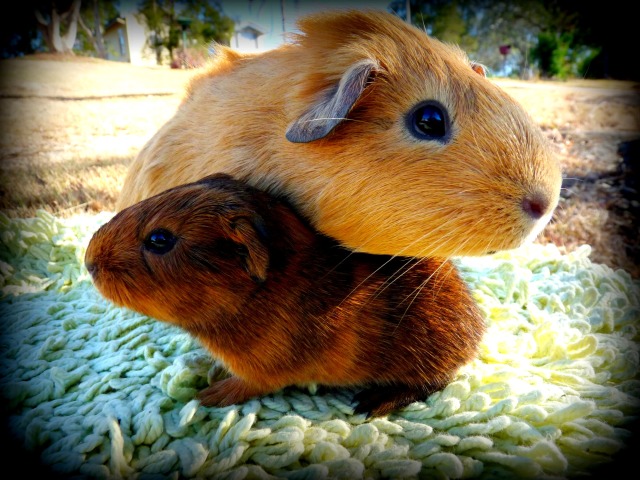 Its a boy! And a boy! And a girl! I think.
Question
Peaches
Hi Pat
I want to thank you so much fo
Its a boy! And a boy! And a girl! I think.
Question
Peaches
Hi Pat
I want to thank you so much fo
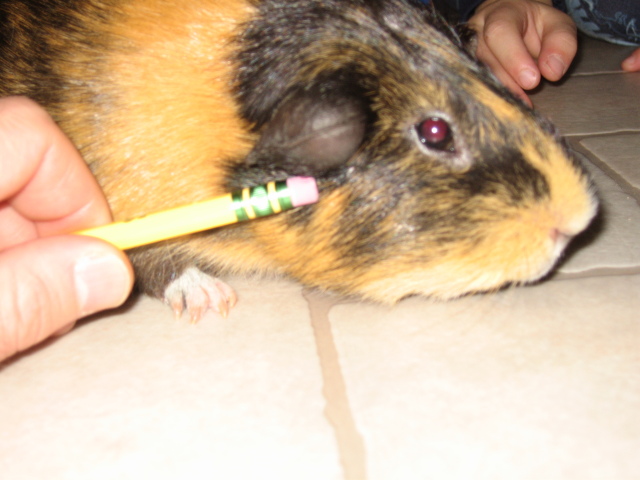 Swollen Ear - Blood
QuestionQUESTION: My daughters pet developed a swollen
Swollen Ear - Blood
QuestionQUESTION: My daughters pet developed a swollen
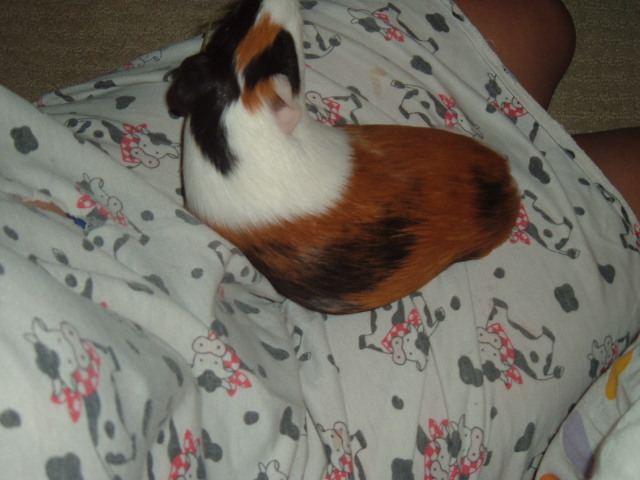 Fruit/Veggie list
QuestionLopsided Pancakey
QUESTION: I read in a
Fruit/Veggie list
QuestionLopsided Pancakey
QUESTION: I read in a
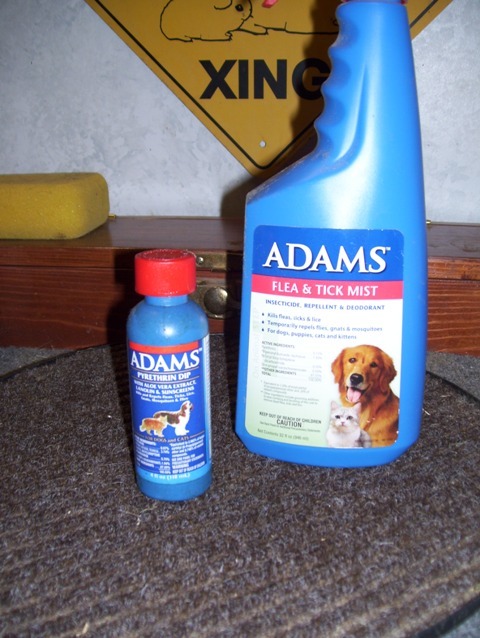 Guinea pigs not getting along
QuestionAbout a week ago I bought two female guinea pig
Guinea pigs not getting along
QuestionAbout a week ago I bought two female guinea pig
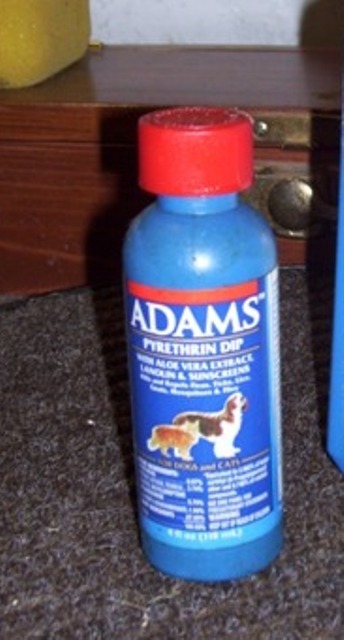 mites on guinea pigs
QuestionQUESTION: I adopted 2 guinea pigs from our anim
mites on guinea pigs
QuestionQUESTION: I adopted 2 guinea pigs from our anim